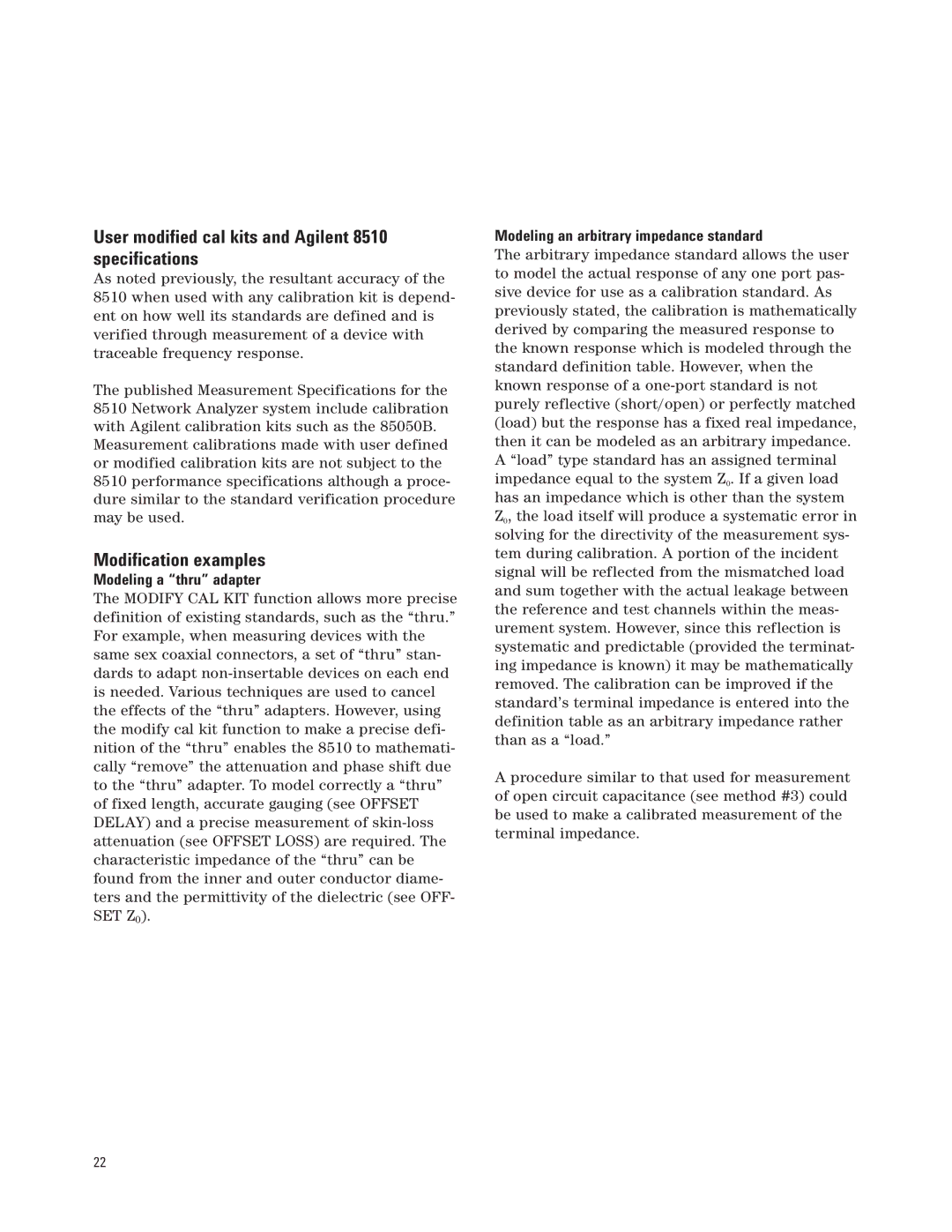User modified cal kits and Agilent 8510 specifications
As noted previously, the resultant accuracy of the 8510 when used with any calibration kit is depend- ent on how well its standards are defined and is verified through measurement of a device with traceable frequency response.
The published Measurement Specifications for the 8510 Network Analyzer system include calibration with Agilent calibration kits such as the 85050B.
Measurement calibrations made with user defined or modified calibration kits are not subject to the 8510 performance specifications although a proce- dure similar to the standard verification procedure may be used.
Modification examples
Modeling a “thru” adapter
The MODIFY CAL KIT function allows more precise definition of existing standards, such as the “thru.” For example, when measuring devices with the same sex coaxial connectors, a set of “thru” stan- dards to adapt non-insertable devices on each end is needed. Various techniques are used to cancel the effects of the “thru” adapters. However, using the modify cal kit function to make a precise defi- nition of the “thru” enables the 8510 to mathemati- cally “remove” the attenuation and phase shift due to the “thru” adapter. To model correctly a “thru” of fixed length, accurate gauging (see OFFSET DELAY) and a precise measurement of skin-loss attenuation (see OFFSET LOSS) are required. The characteristic impedance of the “thru” can be found from the inner and outer conductor diame- ters and the permittivity of the dielectric (see OFF- SET Z0).
Modeling an arbitrary impedance standard
The arbitrary impedance standard allows the user to model the actual response of any one port pas- sive device for use as a calibration standard. As previously stated, the calibration is mathematically derived by comparing the measured response to the known response which is modeled through the standard definition table. However, when the known response of a one-port standard is not purely reflective (short/open) or perfectly matched (load) but the response has a fixed real impedance, then it can be modeled as an arbitrary impedance. A “load” type standard has an assigned terminal impedance equal to the system Z0. If a given load has an impedance which is other than the system Z0, the load itself will produce a systematic error in solving for the directivity of the measurement sys- tem during calibration. A portion of the incident signal will be reflected from the mismatched load and sum together with the actual leakage between the reference and test channels within the meas- urement system. However, since this reflection is systematic and predictable (provided the terminat- ing impedance is known) it may be mathematically removed. The calibration can be improved if the standard’s terminal impedance is entered into the definition table as an arbitrary impedance rather than as a “load.”
A procedure similar to that used for measurement of open circuit capacitance (see method #3) could be used to make a calibrated measurement of the terminal impedance.
